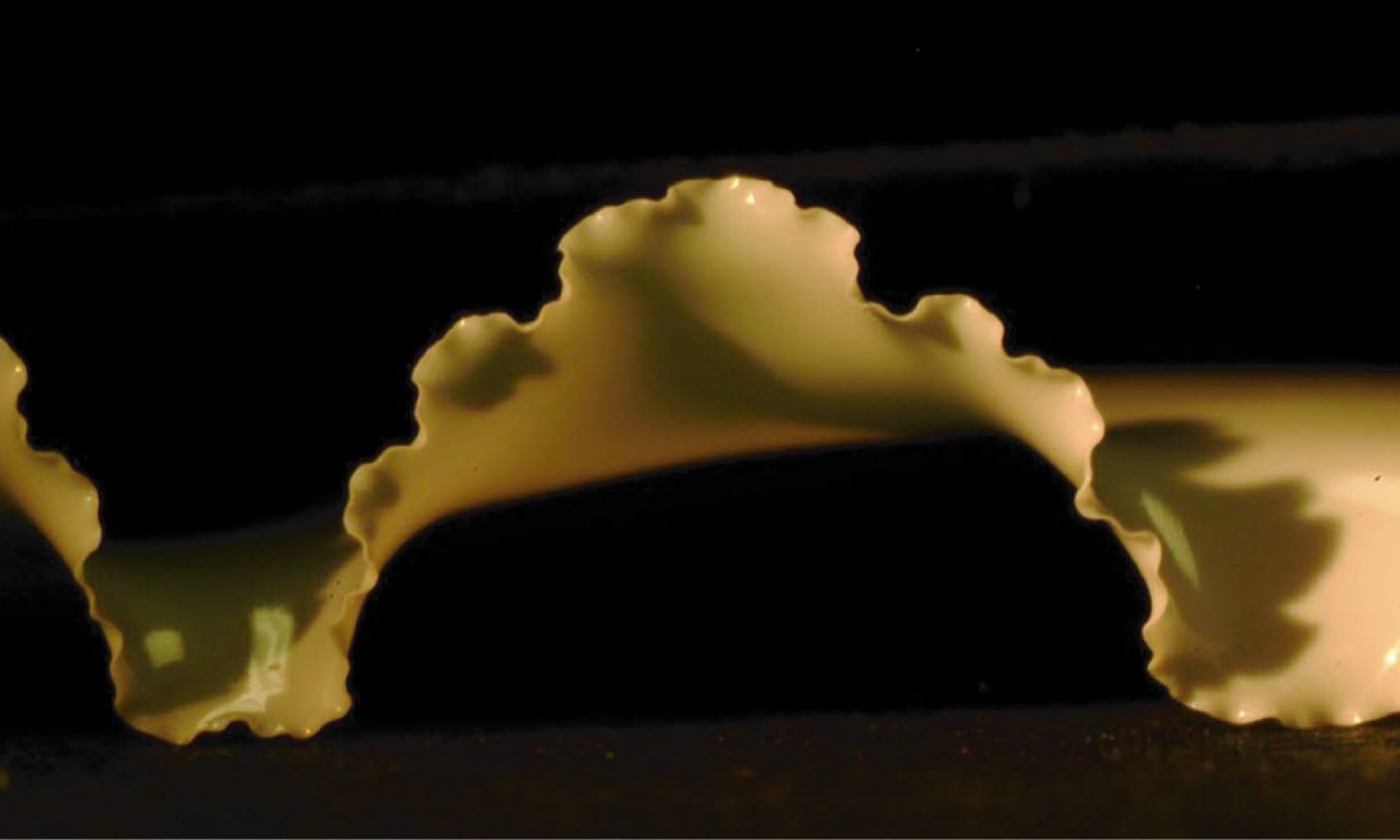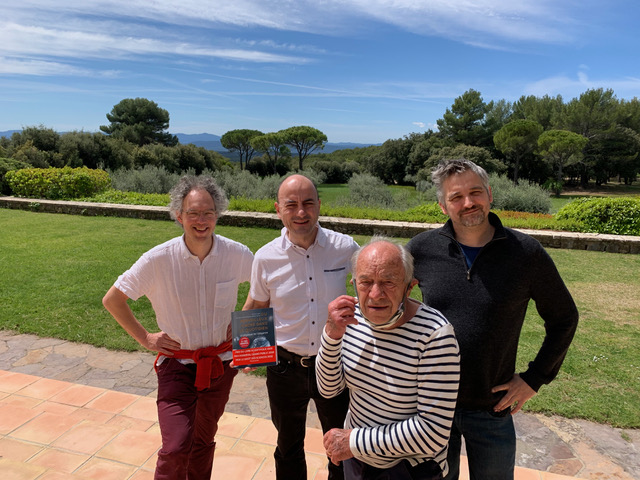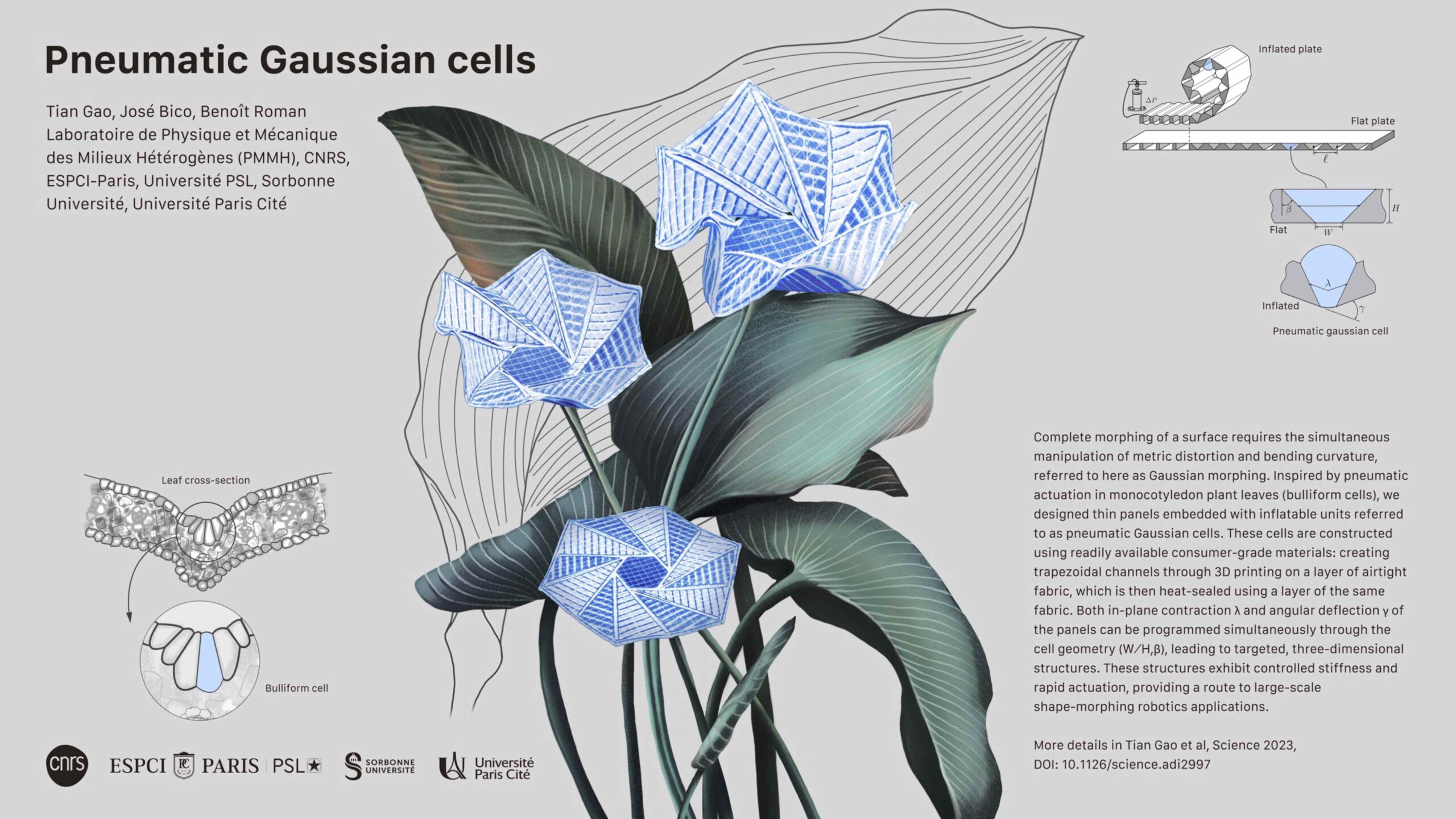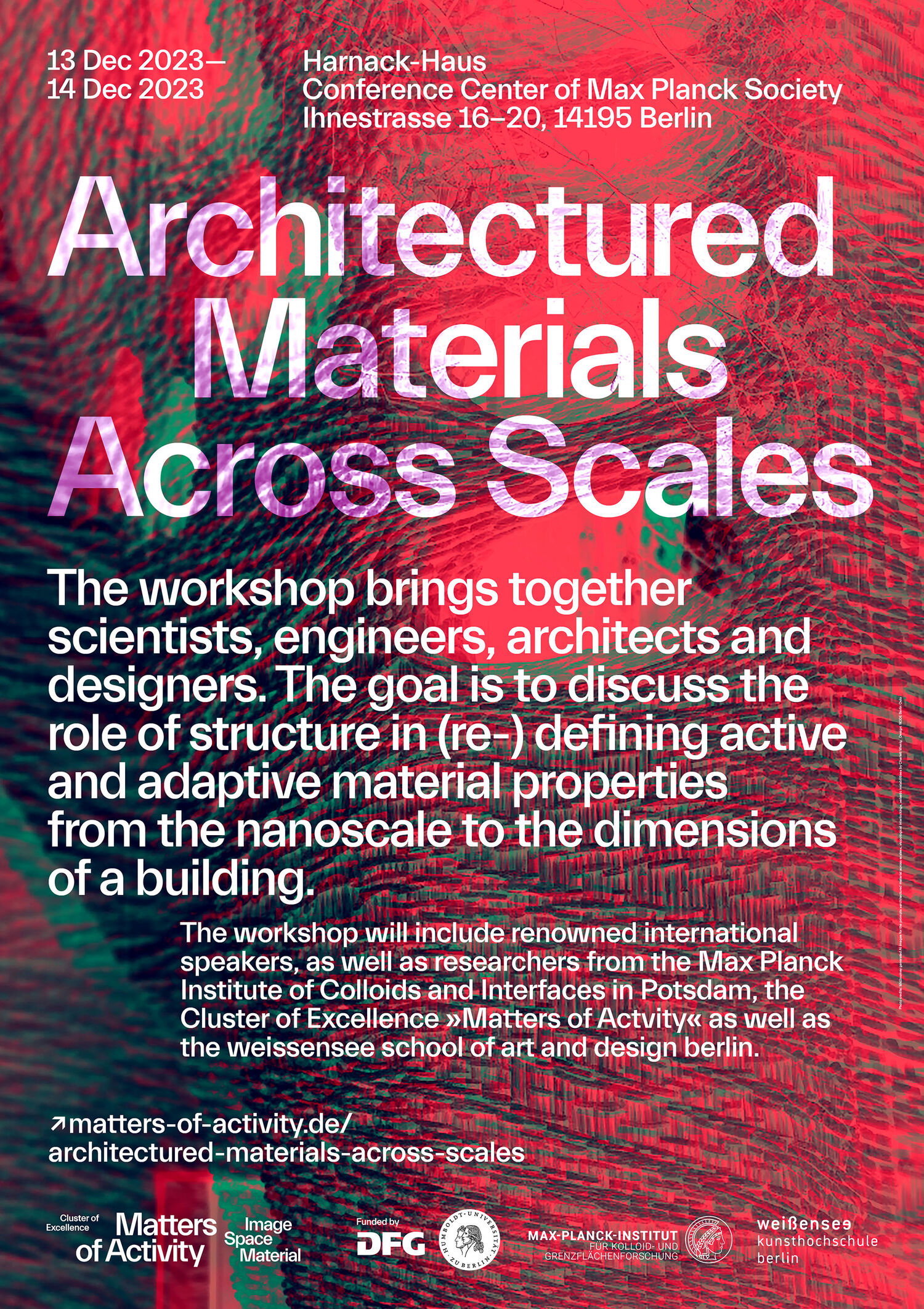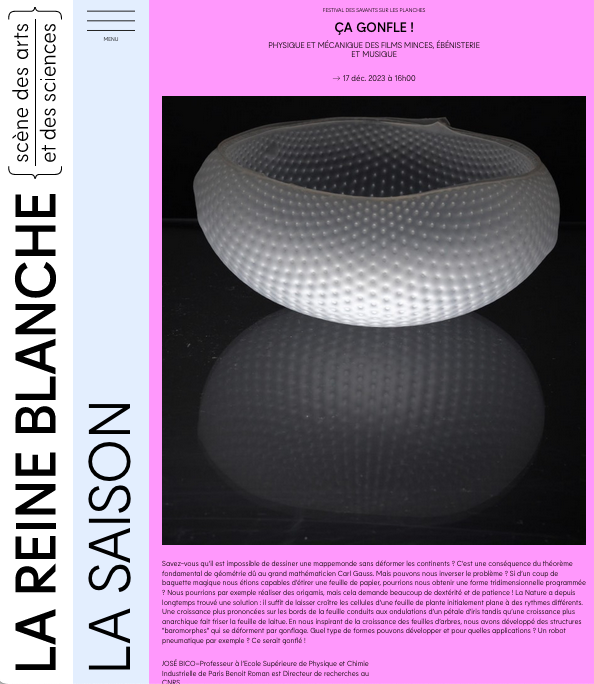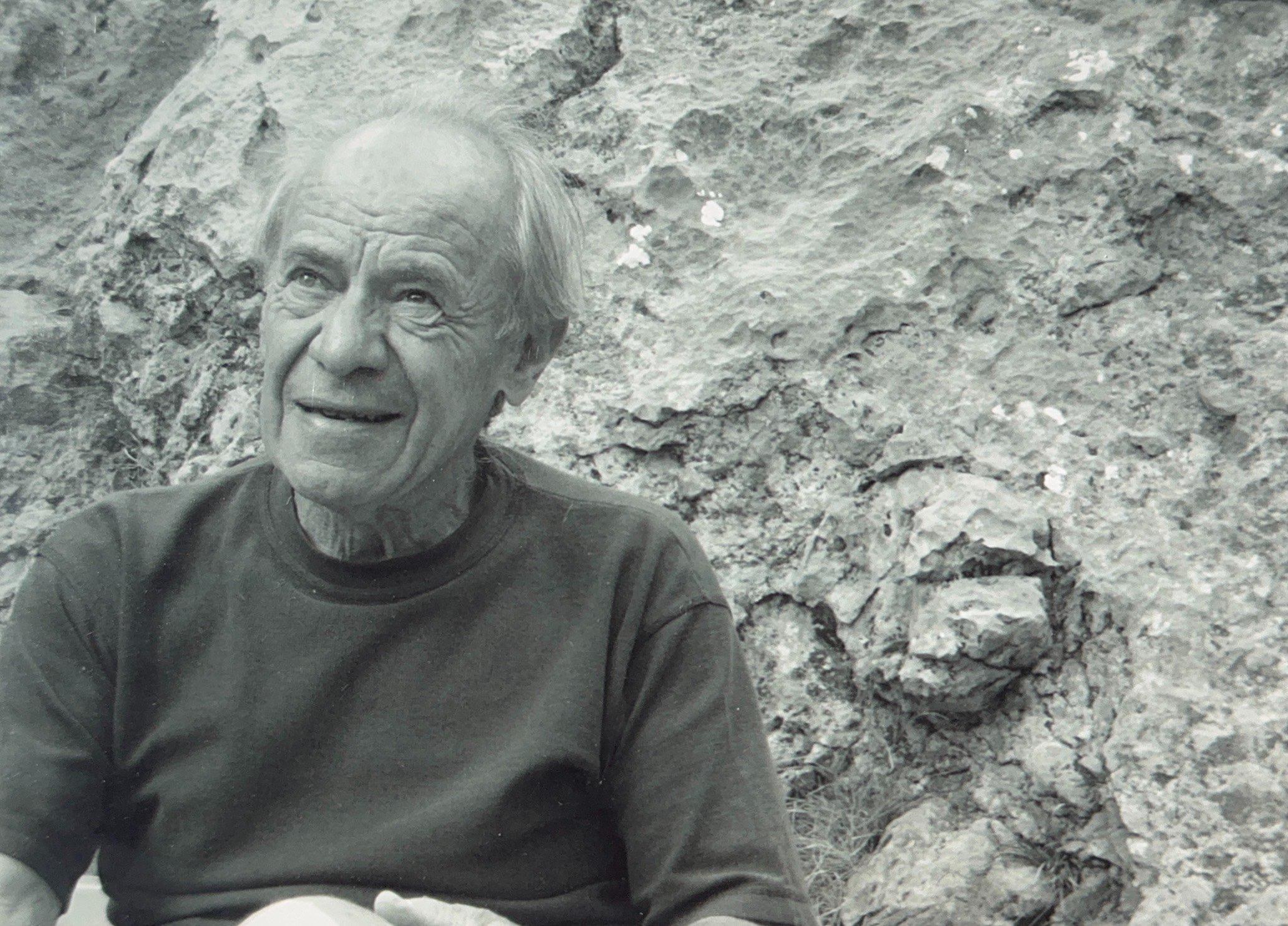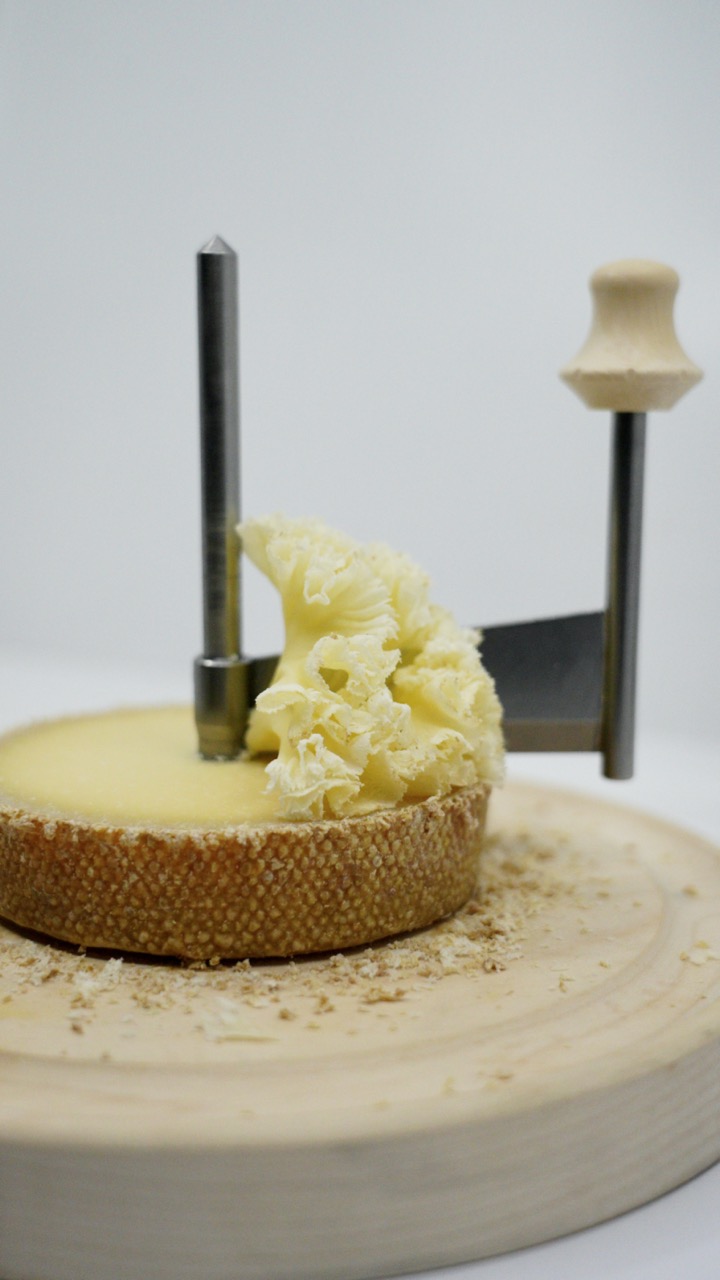
un article de D.Larousserie dans le cahier des sciences du Monde le 4 Juin 2025, à propos de notre travail sur la morphogenese par raclement de la surface de ce fromage.
(Photo ESPCI )
Pourquoi quand on découpe ce fromage suisse cela génère des fleurs aux bords dentelés ? Des chercheurs ont décrypté le mécanisme à l’œuvre, la « frustration géométrique »…
L’histoire des sciences retiendra que c’est en France qu’un chercheur chinois a résolu l’énigme d’un fromage suisse. Jishen Zhang, en postdoctorat à l’ESPCI Paris, physicien, a voulu comprendre comment la rotation d’une lame sur le célèbre fromage en forme de cylindre, la tête de moine, découpe de fines tranches plissées s’enroulant en forme de fleurs aux bords dentelés. « Jishen, qui travaillait dans un laboratoire voisin, est venu nous voir car nous avions étudié des formes analogues en déchirant du plastique », se souvient Benoît Roman, chercheur CNRS, coauteur avec son collègue et deux autres membres de l’ESPCI de l’article dans Physical Review Letters du 21 mai qui révèle les secrets de la tête de moine.
En déchirant un sac plastique, l’étirement des extrémités est plus grand qu’au niveau du point de rupture. Cette différence contraint le bord à se courber en vagues multiples. Idem pour les feuilles de salade ou d’orchidée dans lesquelles des croissances plus actives dans des directions différentes engendrent des contraintes géométriques obligeant la feuille plate à se gondoler. Ce principe dit de « frustration géométrique » est analogue à ce qui empêche de recouvrir un ballon avec une grande feuille plate.
La croûte et le cœur
Pour le fromage au lait de vache, cette frustration a été mise en évidence par les chercheurs, qui se sont équipés de la fameuse girolle, l’appareil qui racle circulairement le fromage depuis son centre. Ils ont marqué un secteur triangulaire de 15 degrés d’angle et constaté que la découpe n’était pas uniforme entre le bord et le cœur. Au lieu d’obtenir une forme triangulaire, comme l’aurait fait un menuisier au ciseau à bois, ils obtiennent une forme de trompette, pincée au centre et évasée vers la périphérie. Cette différence est l’origine de la frustration géométrique. Elle oblige la surface découpée à se plisser et explique l’apparition de la forme conique si particulière, qui a également l’avantage d’offrir plus de fromage en bouche que si elle était plate.
Lire aussi | Article réservé à nos abonnés Cheddar : le goût inimitable des interactions bactériennes
Pourquoi cette différence entre le centre et le bord ? La vitesse de rotation angulaire n’y est pour rien. En cause, les propriétés mécaniques du fromage, différentes entre la croûte et le cœur. Ce dernier, plus mou, résiste à l’avancée de la lame légèrement enfoncée. Le fromage se ratatine, monte le long de la lame, puis retombe devant elle, augmentant localement l’épaisseur. Tout en réduisant la longueur. Alors qu’aux bords, la tomme est plus sèche et se déforme plus facilement sous l’effet de la poussée du métal. Elle garde la même épaisseur et quasiment la même taille. D’où la forme finale de trompette. Si la croûte est enlevée, alors les jolies fleurs n’apparaissent pas. « C’est une illustration supplémentaire de ce que nous avions observé avec les sacs en plastique. Un mécanisme très simple génère des formes complexes », conclut Benoît Roman.
Avec ses collègues, il veut prolonger cette logique : créer de nouvelles formes à partir de matériaux homogènes, comme une tête de moine sans croûte, mais en modifiant la manière de les découper, par exemple en faisant en sorte que la lame, plus ou moins inclinée, n’attaque pas de la même manière le fromage, un métal ou du bois, entre le centre et la périphérie. Fromage et dessert, en somme.
